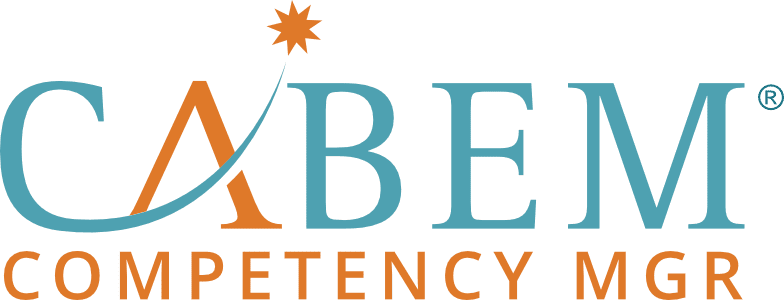How to Use Competency Management to Comply with ISO Standards in Your Organization
There are many different ISO Standards, and sometimes it can be hard to understand which ones are the most suitable for your business. While some are industry-specific, many of the most popular standards are broad-reaching and can be implemented in an organization, no matter what sector it is in. If you are not certified, interested in certification, or want to add more, we have outlined the ten most popular standards below. Read on to learn about each standard, their impact on the businesses that employ them, and how competency management software can and should be used to comply with the standards.
Maintaining consistency and quality across industries and nations is challenging. In a global marketplace, one way to maintain these necessary checks and balances is with international standards, also known as ISOs. These standards represent a trusted symbol of quality. Becoming ISO certified allows your business to gain international recognition by meeting the standards that are important to your industry. It shows commitment to those standards and can be recognized by potential customers, existing customers, and your staff.
The International Organization for Standardization is an independent and non-governmental organization that develops standards to ensure the efficiency, safety, and quality of products, services, and systems. The standards include requirements, specifications, guidelines, or characteristics that can be applied consistently within an industry.
What are the top 10 most popular ISO Standards?
ISO 9001 (Quality Management)
The most popular family of standards is ISO 9000. This is a family of fourteen quality management standards. ISO 9001:2015 details how to implement a Quality Management System (QMS) to better prepare your organization to produce quality products and services. It is customer-focused and places an emphasis on continuous improvement and top management processes that extend throughout the organization.
The ISO 9000 document has undergone many revisions throughout the history of the standard to ensure that it is as efficient and relevant as possible. The standard was updated in 2015 and now places a greater emphasis on risk management. The standard is broadly focused and can be used in any organization in any sector, regardless of its size or complexity.
This standard provides a set of systems and principles that bring together an organization’s business objectives and marketing plan. When this is embedded in your competency management plan, every employee understands how their actions benefit the customer experience. It allows processes to be put into place to continually review and improve an organization. To achieve certification in ISO 9001, a business must demonstrate a strong management system with a process approach, which means that it has a step-by-step sequence of actions. Day-to-day operating procedures and systems are documented and then proven with a certification audit. The audit confirms that the procedures and systems meet the requirements of ISO 9001.
AS9100 (Aerospace)
This standard is a standardized quality management system for the aerospace industry. It fully incorporates ISO 9001 but adds requirements related to quality and safety within aviation, space, and defense. Many aerospace manufacturers and suppliers worldwide require compliance to AS9100 as a condition of doing business with them. Certification in this standard can be achieved by organizations in the aerospace industry around the world to improve quality, cost, and delivery performance.
ISO/TS 16949 (Automotive)
One of the older standards, ISO/TS 16949 refers to the automotive industry. TS stands for Technical Specification. Prior to the standard, suppliers were asked by car manufacturers to standardize to the regulations of each individual country, which often led to suppliers needing multiple certifications for the same vehicle.
According to the British Standards Institution (BSI), in 1999 the ISO/TS 16949 standard was created by the International Automotive Task Force (IATF) to help streamline this process. It focuses on the avoidance of errors and defines the requirements for the development, production, and installation of automotive-related products. Today certification is required by almost all tier 1 companies, and in turn, many of them require their tier 2 and 3 suppliers to certify.
ISO 17025 (Testing/ FDA)
This standard enables laboratories to demonstrate that they operate competently and generate valid results. It identifies the technical competence and management system requirements that guarantee test results and calibrations are consistently accurate. ISO 17025 facilitates cooperation between laboratories, generating wider acceptance of results between countries. This standard is useful to universities, research facilities, governments, regulators, inspection bodies, and any group that needs to do testing, sampling, or calibration, and wants reliable results.
Competency management is critical in implementing and maintaining compliance with ISO 17025 regulatory and safety requirements. Knowledge, soft skills, and credentialing are crucial elements in proving internal competence. Laboratory personnel must be able to perform customer-requested laboratory tests or calibrations, operate equipment, and review, record, and authorize the release of results.
TL 9000 (Telecommunication)
This standard incorporates all of the elements of the quality standard ISO 9001 for the telecommunications industry. It adds requirements specific to the hardware, software, and services segments that focus on customer needs, strategic planning, and accountability. Another element of TL 9000 is a qualitative method of measuring cost and performance, which provides industry benchmarking capabilities. This standard was designed by the QuEST Forum, consisting of representatives from leading telecommunications service providers in the US, Canada, and Britain, in 1998 to focus on supply chain directives throughout the international telecommunications industry.
ISO 13485 (Medical Devices)
The medical equipment standard ISO 13485 is a single document and does not belong to a family like many of the ISO standards. It puts a QMS in place for the production of medical devices and equipment and is very specific to the health industry. It is often implemented with ISO 9000 to show that an organization is qualified to do business, and the document can be catered to the needs of a specific organization.
Competency in this standard can be gained through education, certification, skills development, and experience. It is critical that businesses ensure that their training methods are effective, resulting in the competency of personnel to perform the necessary job functions specific to their roles. Keeping up-to-date and accurate records through competency management is crucial.
ISO 29001 (Oil / Gas)
This standard is for all organizations working within the oil and gas industry supply chain. All requirements for ISO 29001 are generic and intended to be applicable to all organizations, regardless of the size and product provided. The oil, gas, and petrochemical industry can inflict significant damage on people and the environment if improperly managed. Therefore, a high level of operational integrity, as well as best practices and processes are needed to ensure safe operations. This standard provides the platform and method for reaching these high standards and ensuring safe operations.
ISO 29001 is completely aligned with ISO 9001. It incorporates best practices and risk management for the way organizations implement quality management requirements for the design, development, production, installation, and service of products for the oil and gas industries. Competency management will ensure that competency requirements for audits and certification in these specific management systems have been met.
ISO 27001 (Information Security)
This family of standards concerns information technology to improve security and protect company assets. 27001 is a management-based system specifying a minimum set of policies, procedures, plans, records, and other documented information needed to become compliant. This can be monitored through a competency management program. Not only does this standard provide organizations with the necessary know-how for protecting valuable data and information, but it also provides certification which proves to customers and partners that it safeguards its data. ISO 27001 is a process for managing risks through the implementation of security controls.
ISO 14001 (Environment)
ISO 14000 is a family of standards relating to the environment. It includes multiple standards, similar to ISO 9000. ISO 14001:2015 is the most popular in the family and is the only one in which an organization can be certified.
ISO 14001 is concerned with how processes interact with the environment. The first step is to determine the competence, skills, and abilities required for a person to perform a job function while avoiding potential environmental impacts. Then after identifying these competencies, people must be found with these competencies to fill the positions and then properly trained. Then all employees must be made aware of how their tasks can lead to identified environmental impacts. ISO 14001 specifies that you should keep records to show that competencies have been achieved through education, training, or experience.
ISO 22000 (Food Safety)
This standard is focused on developing and implementing a food safety management system and can help any organization that works in the food chain. This family is used in a variety of organizations directly or indirectly involved with food. These include obvious choices such as restaurants of any kind, as well as food manufacturers, and food transportation services such as caterers.
With over 26,000 certifications, ISO 22000:2005 is one of the more common standards. It can be applied on its own or integrated with ISO 9001. Competency Management allows organizations to comply with this standard. Businesses must meet all applicable food safety-related statutory and regulatory requirements. This standard provides a framework for organizations to develop, implement, monitor, and continually improve a food safety management system. It is critical to document these food safety management processes.
Why Use Competency Management Software to Comply with ISO Standards?
ISO 9001 Competence and Awareness defines the guidelines that must be followed by all staff to be considered competent and aware of the requirements. This procedure ensures that all employees are performing to their best ability in their specific areas of expertise. When competency management software is used to comply with the requirements of these standards, an organization will boost its overall success, profitability, and market potential.
Planning for competency controls must include determining competency criteria, skills evaluation, and identification of training needs. Criteria for competency must be developed based on appropriate education, skills, training, and experience for activities, tasks, functions, and processes. The level and detail of such qualifications, skills, training, and experience will depend upon the complexity of the product, process, technology, and customer and regulatory requirements.
CABEM Technology’s solution allows for a multitude of confirmation methods and tracks everything in one system so that you can answer customer and auditor questions in a flash. CABEM’s Competency Manager includes powerful reporting capabilities out of the box. The interactive Activity Grid matrix is a skills inventory that makes it easy to zero in on user progress toward completion. The Activity Grid allows Managers, Mentors, and System Administrators to view the details of a user’s progress for all assignments, as well as the ability to act through approval signoffs, assessments, and multiple other actions right from within the same screen. Discriminating filters provide the most efficient way of accessing important business intelligence in real-time.
Other articles that may interest you:


